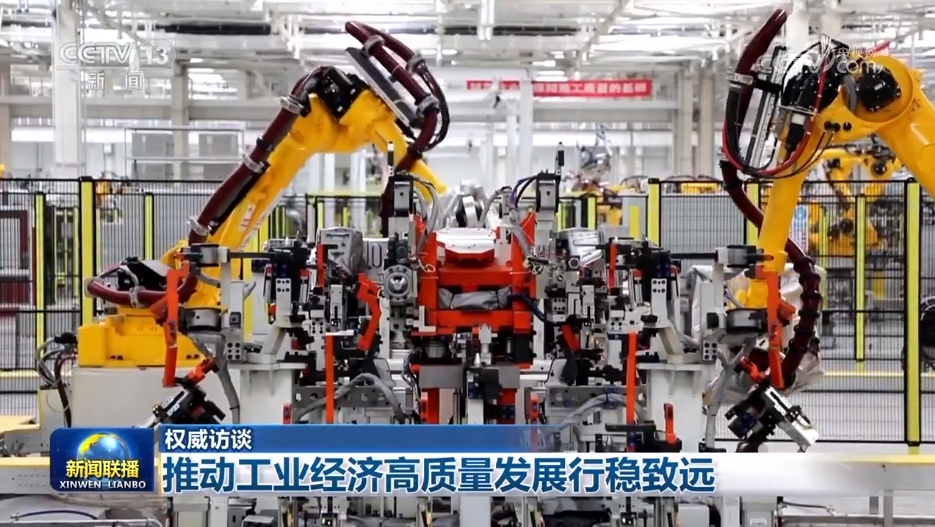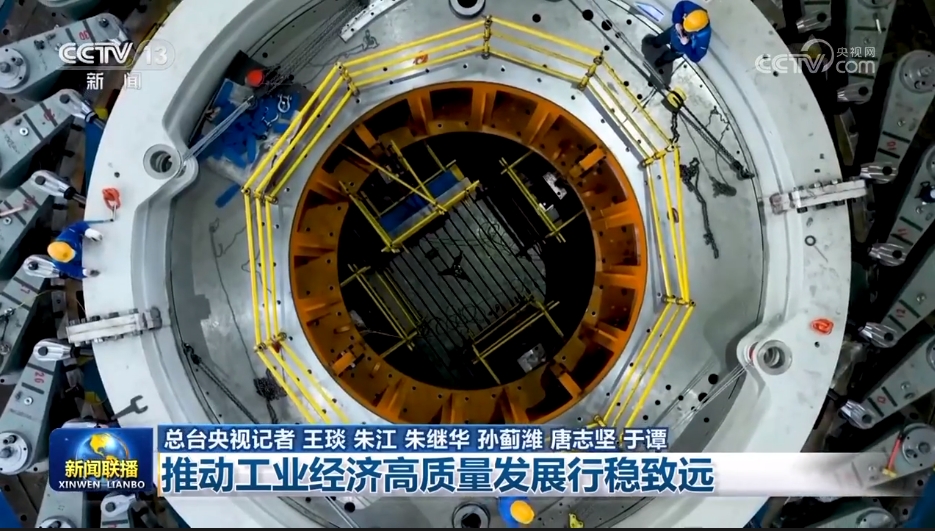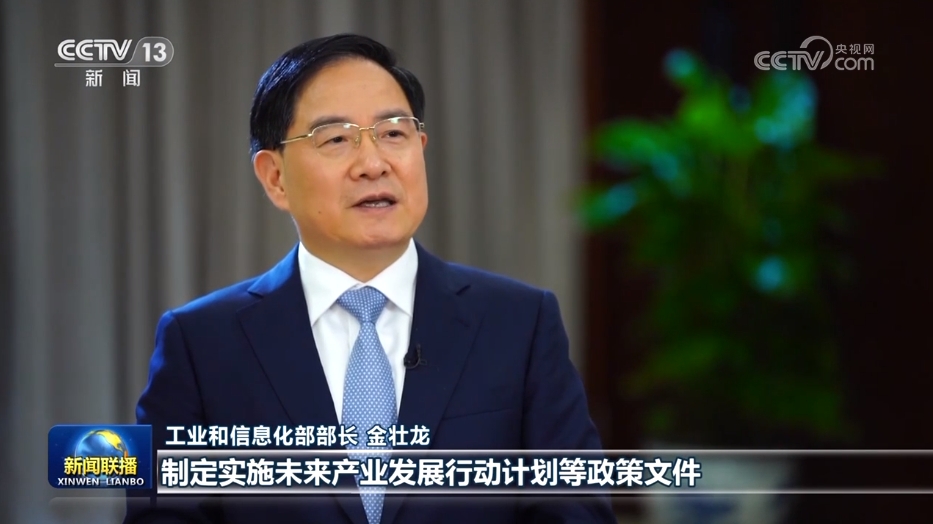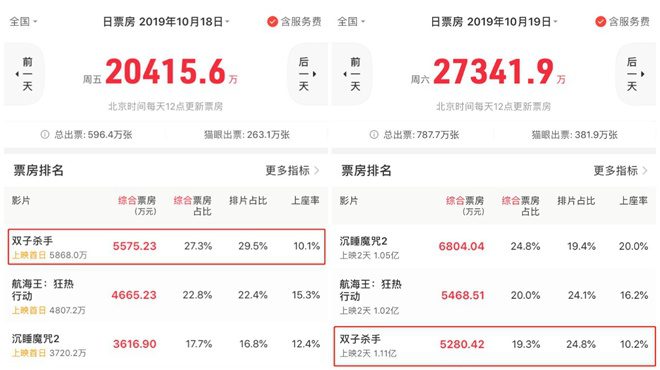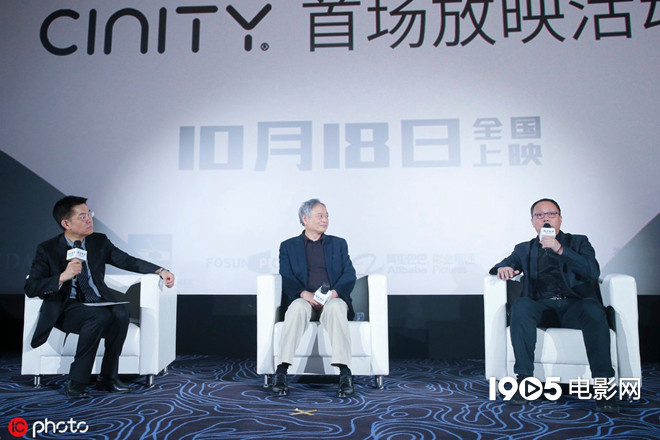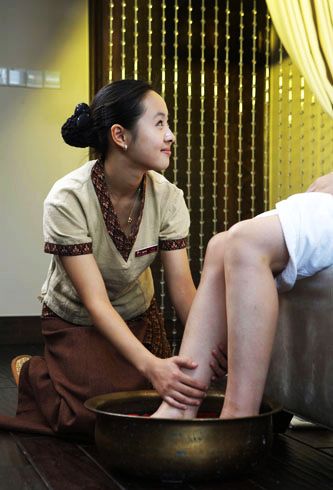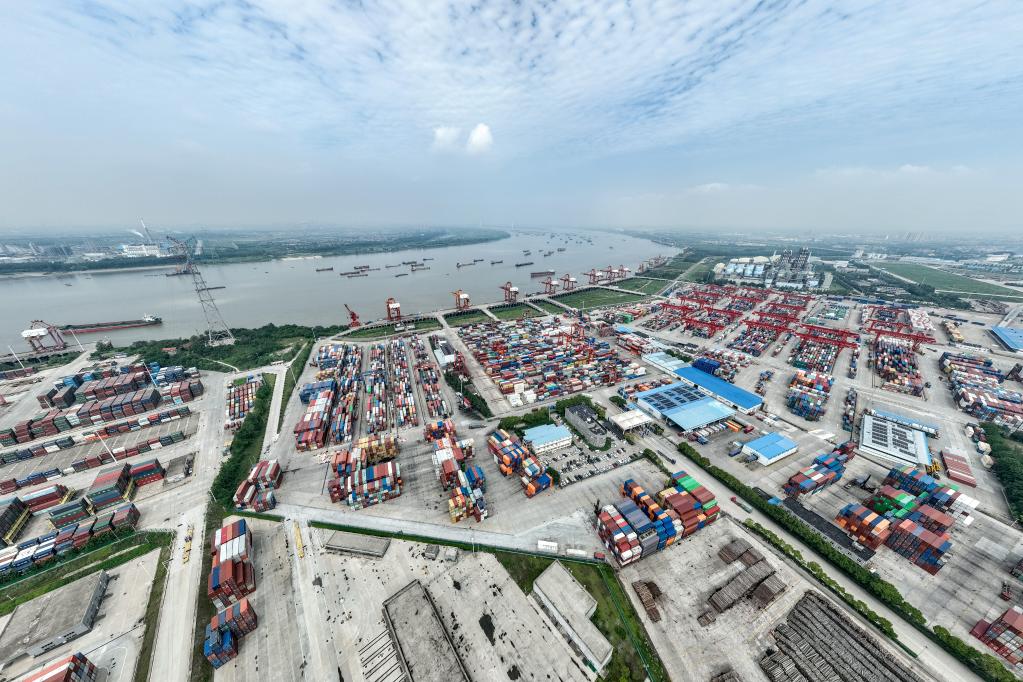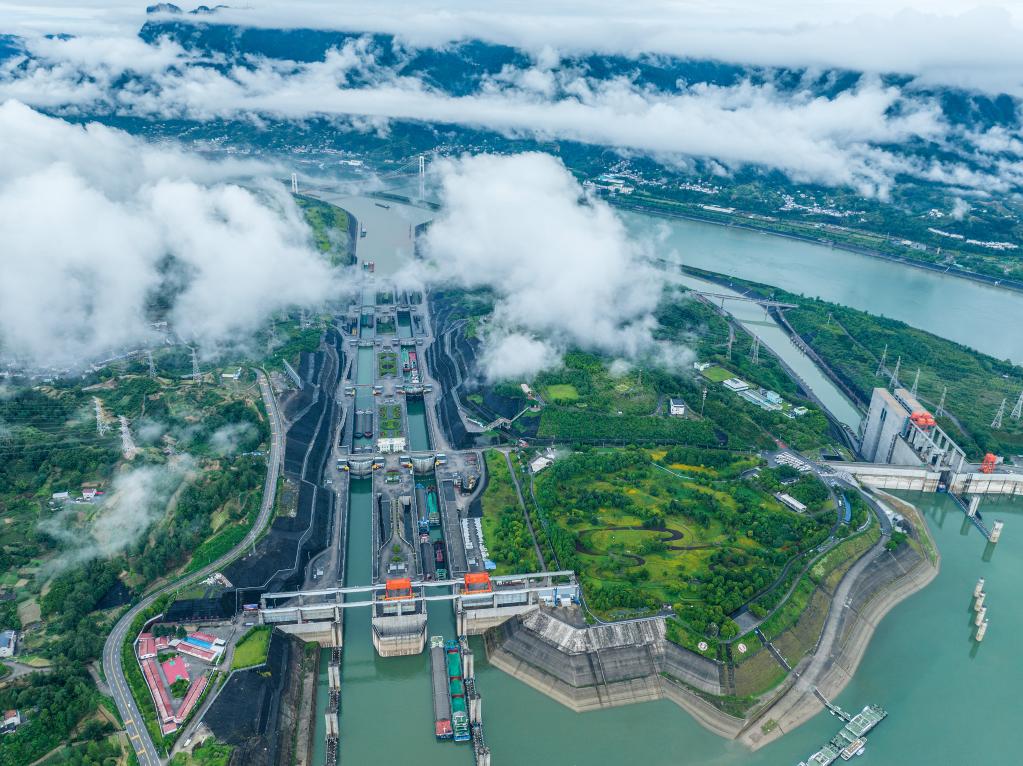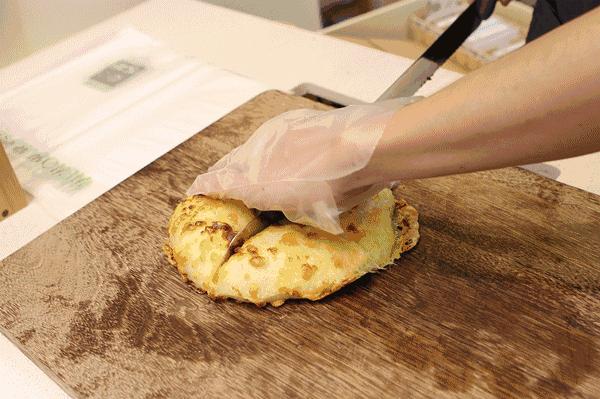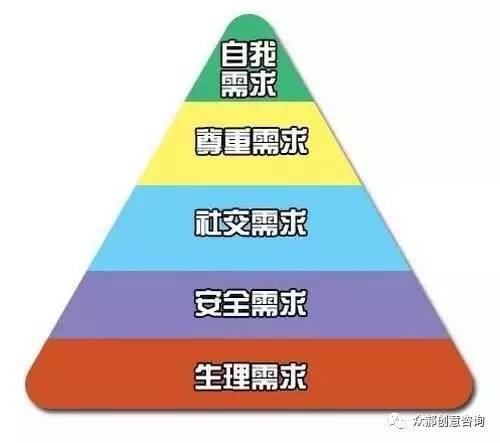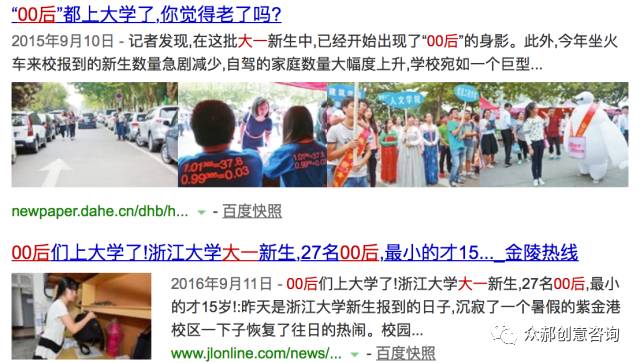Yueyang housing fund management center
Detailed rules for the implementation of extraction operation
(Revised in January 2020)
According to the "Regulations on the Administration of Housing Provident Fund", "Yueyang City Housing Provident Fund Extraction Management Measures" and other relevant laws and regulations and the actual situation of Yueyang City, these rules are formulated. These rules involve the following seventeen kinds of extraction situations:
First, the purchase of cash, faster extraction
Second, the purchase of second-hand housing extraction
Three, the purchase of resettlement housing extraction
Four, the purchase of affordable housing extraction
Five, the construction of self-occupied housing extraction
Six, renovation, overhaul occupied housing extraction
Seven, from, retirement extraction
Eight, complete or partial loss of labor ability and termination of labor relations with the unit extraction.
Nine, terminate the labor relationship with the unit and not re employment extraction.
Ten, exit settlement extraction
Eleven, early settlement of housing provident fund loan withdrawal
Twelve, early settlement of commercial bank housing mortgage loan extraction
Thirteen, rental extraction
Fourteen, workers died or was declared dead extraction.
Fifteen, housing provident fund loan repayment hedge extraction
Sixteen, the existing residential elevator extraction
Seventeen, sleep account extraction
First, the purchase of cash, faster extraction
(1) Necessary information
1. Extract the original valid identity certificate of the applicant;
2. The original valid identity certificate of the spouse;
3. Original proof of family relationship (original proof of marital status and original proof of household registration);
4. The Certificate of Real Estate Ownership or the Certificate of Real Estate Registration with the registration date of nearly 12 months, the purchase contract (agreement) filed by the real estate authorities, and the invoice (receipt) of the paid purchase price;
5. The Certificate of Number of Units of Real Estate and the Certificate of Property Right Information Inquiry (only the Certificate of Number of Units of Real Estate is provided if the information data of the real estate registration agency and the real estate administrative department have been integrated) issued by the real estate registration agency and the real estate administrative department in the place where the housing provident fund is deposited, the place where the house is purchased (if necessary, the registered residence can be increased), which belongs to Yueyang City and is obtained by the inquiry of the housing provident fund management center authorized by the applicant.
6. Withdraw the personal bank card of the applicant.
(2) Withdrawal quota
The withdrawal amount is the balance of the housing provident fund account of both husband and wife, but the total withdrawal amount does not exceed the purchase price and the balance of the housing provident fund account is reserved to more than 100 after withdrawal.
(3) Time limit for handling
1, in Yueyang city within the scope of the purchase, from the date of accepting the application within 3 working days to make a decision to approve or not to withdraw, and inform the applicant to withdraw, complete the formalities, immediately handle.
2. If you buy a house in other cities in Hunan Province other than Yueyang City, you shall make a decision on whether to grant or not to grant the withdrawal within 20 working days from the date of accepting the application, and inform the applicant of the withdrawal.
(4) Related matters
1. Provisions on the object of purchase: Family members of employees refer to couples and minor children (under 18 years old).
2. Provisions on the extraction of common property rights: Only employees’ family members can legally purchase self-occupied houses.
3. Provisions on the scope of purchase: legal purchase in Hunan Province.
4. Prescription on the time limit for house purchase withdrawal: If an employee’s family has legally purchased a self-occupied house and has not applied for a housing provident fund personal housing loan with the house purchased this time, the employee and his/her spouse can apply for house purchase withdrawal within 12 months after purchasing the house (subject to the issuing date of the Property Ownership Certificate or the Property Registration Certificate).
5. Provisions on the number of withdrawals: the storage balance in the housing provident fund account can be withdrawn twice or once, but the cumulative withdrawal amount shall not exceed the total purchase price, and the second withdrawal shall be based on the date of the first withdrawal.
6. Determination of the total purchase price: the existing house is subject to the price stated in the real estate value-added tax invoice; The auction house shall be subject to the online contract price recorded by the real estate authorities, excluding garage (parking space), decoration and other expenses.
7. Transfer-in of withdrawal funds: transfer to withdrawal of the applicant’s bank card.
8. Provisions on buying houses for minor children: proof of mutual relationship (one of household registration book, one-child certificate and birth medical certificate) must be provided.
9. Provisions on the withdrawal of mortgage loans from commercial banks for purchased houses: the original bank mortgage loan contract and personal credit report must be provided, and the personal credit report is obtained by the applicant’s authorized housing provident fund management center.
10. The applicant for extraction must be present in person to keep the image data, and all the extracted data must be scanned.
11. Restricted withdrawal: If the employee and his wife have outstanding housing provident fund loans in the local area or guarantee outstanding housing provident fund loans for others, and the account is in a frozen state, the housing provident fund can only be used to repay the loan or the guaranteed loan as agreed in the loan contract; Gift and inheritance do not belong to the normal purchase behavior, and this withdrawal cannot be handled; If the spouse of the purchased house has a share of property rights, the amount of withdrawal shall be limited according to the share of property rights, and if the spouse has no share of property rights, it cannot be withdrawn.
Second, the purchase of second-hand housing extraction
(1) Necessary information
1. Extract the original valid identity certificate of the applicant;
2. The original valid identity certificate of the spouse;
3. Original proof of family relationship (original proof of marital status and original proof of household registration);
4. The Certificate of Immovable Property Rights, invoices for real estate transactions, invoices for payment of transfer taxes and fees, and purchase contracts (agreements) within the last 12 months after the transfer;
5. The Certificate of Number of Units of Real Estate and the Certificate of Property Right Information Inquiry (only the Certificate of Number of Units of Real Estate is provided if the information data of the real estate registration agency and the real estate administrative department have been integrated) issued by the real estate registration agency and the real estate administrative department in the place where the housing provident fund is deposited, the place where the house is purchased (if necessary, the registered residence can be increased), which belongs to Yueyang City and is obtained by the inquiry of the housing provident fund management center authorized by the applicant.
6. Withdraw the personal bank card of the applicant.
(2) Withdrawal quota
The withdrawal amount is the balance of the housing provident fund account of both husband and wife, but the total withdrawal amount does not exceed the purchase price and the balance of the housing provident fund account is reserved to more than 100 after withdrawal.
(3) Time limit for handling
1, in Yueyang city within the scope of the purchase, from the date of accepting the application within 3 working days to make a decision to approve or not to withdraw, and inform the applicant to withdraw, complete the formalities, immediately handle.
2. If you buy a house in other cities in Hunan Province other than Yueyang City, you shall make a decision on whether to grant or not to grant the withdrawal within 20 working days from the date of accepting the application, and inform the applicant of the withdrawal.
(4) Related matters
1. Provisions on the object of purchase: Family members of employees refer to couples and minor children (under 18 years old).
2. Provisions on the extraction of common property rights: Only employees’ family members can legally purchase self-occupied houses.
3. Provisions on the scope of purchase: legal purchase in Hunan Province.
4. Provisions on the time limit for the withdrawal of house purchase: If an employee’s family has legally purchased a self-occupied house and has not applied for a housing provident fund personal housing loan with the house purchased this time, the employee and his spouse can apply for the withdrawal of house purchase within 12 months after the purchase of the house (subject to the issuing date of the Certificate of Immovable Property Rights).
5. Provisions on the number of withdrawals: the storage balance in the housing provident fund account can be withdrawn twice or once, but the cumulative withdrawal amount shall not exceed the total purchase price, and the second withdrawal shall be based on the date of the first withdrawal.
6. Determination of the total purchase price: in principle, the price stated in the real estate value-added tax invoice shall prevail, except for garage (parking space), decoration and other expenses; If it is suspected that the transaction price is artificially raised, relevant investigation shall be arranged, and the investigation report issued by the management department shall prevail.
7. Transfer-in of withdrawal funds: transfer to withdrawal of the applicant’s bank card.
8. Provisions on buying houses for minor children: proof of mutual relationship (one of household registration book, one-child certificate and birth medical certificate) must be provided for legally buying houses for minor children.
9. Provisions on the withdrawal of mortgage loans from commercial banks for purchased houses: the original bank mortgage loan contract and personal credit report must be provided, and the personal credit report is obtained by the applicant’s authorized housing provident fund management center.
10. The applicant for extraction must be present in person to keep the image data, and all the extracted data must be scanned.
11. Restricted withdrawal: if there are outstanding housing provident fund loans or outstanding housing provident fund loans for others, and the account is frozen, the housing provident fund withdrawal cannot be handled; Donation and inheritance do not belong to the normal purchase behavior, and housing accumulation fund cannot be withdrawn; If the spouse of the purchased house has a share of property rights, the amount of withdrawal shall be limited according to the share of property rights, and if the spouse has no share of property rights, it cannot be withdrawn.
Three, the purchase of resettlement housing extraction
(1) Necessary information
1. Extract the original valid identity certificate of the applicant;
2. The original valid identity certificate of the spouse;
3. Original proof of family relationship (original proof of marital status and original proof of household registration);
4. Original Certificate of Real Estate Ownership or Certificate of Real Estate Registration, original compensation agreement for demolition and resettlement, original contract for purchase of resettlement houses and payment voucher for actual payment of house purchase in kind compensation and resettlement, original contract for purchase of commercial housing and payment voucher and tax exemption voucher for actual payment of house purchase in monetary compensation and resettlement, and invoices for real estate transaction and payment of transfer taxes must be provided for those who have handled the Certificate of Real Estate Ownership;
5. The Certificate of Number of Units of Real Estate and the Certificate of Property Right Information Inquiry (only the Certificate of Number of Units of Real Estate is provided if the information data of the real estate registration agency and the real estate administrative department have been integrated) issued by the real estate registration agency and the real estate administrative department in the place where the housing provident fund is deposited, the place where the house is purchased (if necessary, the registered residence can be increased), which belongs to Yueyang City and is obtained by the inquiry of the housing provident fund management center authorized by the applicant.
6. Withdraw the personal bank card of the applicant.
(2) Withdrawal quota
The withdrawal amount is the balance of the housing provident fund account of both husband and wife, and the total withdrawal amount of the compensation and resettlement in kind does not exceed the balance of the actually paid area and floor compensation, and the provident fund account is reserved to more than 100 places after withdrawal; The total withdrawal of monetary compensation and resettlement shall not exceed the actual payment after deducting the total amount of monetary compensation from the total amount of housing purchased, and the balance of the housing provident fund account after withdrawal shall be kept to more than 100 places.
(3) Time limit for handling
1, in Yueyang city within the scope of the purchase, from the date of completion of the investigation and verification within 3 working days to make a decision to approve or not to extract, and inform the applicant to extract, complete the formalities, immediately handle.
2. If the house is purchased in other cities in Hunan Province other than Yueyang City, a decision on whether to grant or not to grant the withdrawal shall be made within 20 working days from the date of completion of investigation and verification, and the applicant for withdrawal shall be informed.
(4) Related matters
1. Provisions on the object of purchase: Family members of employees refer to couples and minor children (under 18 years old).
2. Provisions on the extraction of common property rights: Only employees’ family members can legally purchase self-occupied houses.
3. Provisions on the scope of purchase: legal purchase in Hunan Province.
4. Prescription on the time limit for house purchase withdrawal: If an employee’s family has legally purchased a self-occupied house and has not applied for a housing provident fund personal housing loan with the house purchased this time, the employee and his/her spouse can apply for house purchase withdrawal within 12 months after purchasing the house (subject to the issuing date of the Property Ownership Certificate or the Property Registration Certificate).
5. Provisions on the number of withdrawals: the storage balance in the housing provident fund account can be withdrawn twice or once, but the cumulative withdrawal amount shall not exceed the total purchase price, and the second withdrawal shall be based on the date of the first withdrawal.
6. Determination of the total purchase price: the compensation and resettlement in kind shall not exceed the actually paid compensation for the area and floor, except for the expenses of purchasing garage (space), decoration, demolition reward, etc. Monetary compensation and resettlement shall not exceed the actual payment after deducting the total amount of monetary compensation from the total amount of housing purchased, except for the expenses such as garage purchase, decoration, demolition reward, etc.
7. Transfer-in of withdrawal funds: transfer to withdrawal of the applicant’s bank card.
8. Provisions on buying houses for minor children: proof of mutual relationship (one of household registration book, one-child certificate and birth medical certificate) must be provided for legally buying houses for minor children.
9. Provisions on the withdrawal of mortgage loans from commercial banks for purchased houses: the original bank mortgage loan contract and personal credit report must be provided, and the personal credit report is obtained by the applicant’s authorized housing provident fund management center.
10. The applicant for extraction must be present in person to keep the image data, and all the extracted data must be scanned.
11. Restricted withdrawal: If there is an outstanding housing provident fund loan or an outstanding housing provident fund loan guarantee for others, and the account is frozen, this withdrawal cannot be handled; If the spouse of the purchased house has a share of property rights, the amount of withdrawal shall be limited according to the share of property rights, and if the spouse has no share of property rights, it cannot be withdrawn.
Four, the purchase of affordable housing extraction
(1) Necessary information
1. Extract the original valid identity certificate of the applicant;
2. The original valid identity certificate of the spouse;
3. Original proof of family relationship (original proof of marital status and original proof of household registration);
4, the original "immovable property certificate", the original contract for the purchase of affordable housing, purchase invoices or payment receipts;
5. Withdraw the personal bank card of the applicant.
(2) Withdrawal quota
The withdrawal amount is the balance of the housing provident fund account of both husband and wife, but the total withdrawal amount does not exceed the total legal purchase price or deed tax amount, and the balance of the housing provident fund account is reserved to more than 100 after withdrawal.
(3) Time limit for handling
1, in Yueyang city within the scope of the purchase, from the date of completion of the investigation and verification within 3 working days to make a decision to approve or not to extract, and inform the applicant to extract, complete the formalities, immediately handle.
2. If the house is purchased in other cities in Hunan Province other than Yueyang City, a decision on whether to grant or not to grant the withdrawal shall be made within 20 working days from the date of completion of investigation and verification, and the applicant for withdrawal shall be informed.
(4) Related matters
1. Provisions on the object of purchase: Family members of employees refer to couples and minor children (under 18 years old).
2. Provisions on the extraction of common property rights: Only employees’ family members can legally purchase self-occupied houses.
3. Provisions on the scope of purchase: legal purchase in Hunan Province.
4. Provisions on the time limit for the withdrawal of house purchase: If an employee’s family has legally purchased a self-occupied house and has not applied for a housing provident fund personal housing loan with the house purchased this time, the employee and his spouse can apply for the withdrawal of house purchase within 12 months after the purchase of the house (subject to the issuing date of the Certificate of Immovable Property Rights).
5. Provisions on the number of withdrawals: the storage balance in the housing provident fund account can be withdrawn twice or once, but the cumulative withdrawal amount shall not exceed the total purchase price, and the second withdrawal shall be based on the date of the first withdrawal.
6. Determination of the total purchase price: The price stated in the real estate value-added tax invoice or the contract price shall prevail, excluding the garage (parking space), decoration and other expenses.
7. Transfer-in of withdrawal funds: transfer to withdrawal of the applicant’s bank card.
8. Provisions on buying houses for minor children: proof of mutual relationship (one of household registration book, one-child certificate and birth medical certificate) must be provided for legally buying houses for minor children.
9. Provisions on the withdrawal of mortgage loans from commercial banks for purchased houses: the original bank mortgage loan contract and personal credit report must be provided, and the personal credit report is obtained by the applicant’s authorized housing provident fund management center.
10. The applicant for extraction must be present in person to keep the image data, and all the extracted data must be scanned.
11. Restricted withdrawal: If there is an outstanding housing provident fund loan or an outstanding housing provident fund loan guarantee for others, and the account is frozen, this withdrawal cannot be handled; If the spouse of the purchased house has a share of property rights, the amount of withdrawal shall be limited according to the share of property rights, and if the spouse has no share of property rights, it cannot be withdrawn.
Five, the construction of self-occupied housing extraction
(1) Necessary information
1. Extract the original valid identity certificate of the applicant;
2. The original valid identity certificate of the spouse;
3. Original proof of family relationship (original proof of marital status and original proof of household registration);
4. The Certificate of Immovable Property Rights in the last 12 months, or the information about the administrative examination and approval of the administrative departments of planning, land and construction in the last 24 months, the information about the start of the construction of the main housing project, and the investigation report issued by the management department;
5. Original construction contract and payment voucher;
6. The Certificate of Number of Units of Real Estate and the Certificate of Property Right Information Inquiry (only the Certificate of Number of Units of Real Estate is provided if the information data of the real estate registration agency and the real estate administrative department have been integrated) issued by the real estate registration agency and the real estate administrative department in the place where the housing provident fund is deposited, the place where the house is purchased (if necessary, the registered residence can be increased), which belongs to Yueyang City and is obtained by the housing provident fund management center authorized by the extraction applicant.
7. Withdraw a personal bank card of the applicant.
(2) Withdrawal quota
The withdrawal amount is the balance of the housing provident fund account of both husband and wife, but the total withdrawal amount does not exceed the total building price of legally built self-occupied housing and the balance of the housing provident fund account is reserved to more than 100 after withdrawal.
(3) Time limit for handling
Make a decision on whether to grant or not to grant extraction within 10 working days from the date of completion of investigation and verification, and inform the extraction applicant.
(4) Related matters
1. Provisions on the object of building extraction: Family members of employees refer to couples and minor children (under 18 years old).
2. Provisions on the extraction of common property rights: It is limited to the legal construction of owner-occupied housing within the family members of employees.
3. Provisions on the scope of extraction for the construction of owner-occupied housing: the legally built owner-occupied housing in Yueyang City is limited.
4, provide planning, land, construction administrative departments of the administrative examination and approval information about building, workers and their spouses can be in the construction of housing within 24 months (based on the planning, land, construction administrative departments of the administrative examination and approval information about building the final approval date), nearly 12 months of the "immovable property certificate" for building extraction.
5. Provisions on the number of applications for extraction: building extraction can only be handled once.
6. Determination of the total price of building: the total investment in building self-occupied housing, excluding garage (space), decoration and other expenses.
7. Transfer-in of withdrawal funds: transfer to withdrawal of the applicant’s bank card.
8. Provisions on building houses for minor children: If building houses for minor children legally, proof of mutual relationship (one of household registration book, one-child certificate and birth medical certificate) must be provided.
9, the center staff site survey, photography; The applicant for extraction must be present in person to keep the image data, and all the extracted data must be scanned.
10. Restricted withdrawal: if there is an outstanding housing provident fund loan or an outstanding housing provident fund loan guarantee for others, and the account is in a frozen state, this withdrawal cannot be handled; If the spouse of the house has a share of property rights, the amount of extraction shall be limited according to the share of property rights, and if the spouse has no share of property rights, it cannot be extracted.
Six, renovation, overhaul occupied housing extraction
(1) Necessary information
1. Extract the original valid identity certificate of the applicant;
2. The original valid identity certificate of the spouse;
3. Original proof of family relationship (original proof of marital status and original proof of household registration);
4. The original of the Certificate of Ownership or Certificate of Immovable Property, and the original of the Housing Safety Appraisal Report (with the appraisal grade of C or D) with the registration date of overhauling the self-occupied housing for more than 10 years. If the appraisal report is issued by a third-party institution with the qualification of housing safety appraisal, it shall provide the relevant qualification certificate of the institution, the information that the main project of rebuilding the self-occupied housing has started construction, and the Certificate of Immovable Property in the last 12 months or.
5. Original renovation or overhaul contract, project budget or payment voucher;
6. Withdraw the personal bank card of the applicant.
(2) Withdrawal quota
The withdrawal amount is the balance of the housing provident fund account of both husband and wife, but the total withdrawal amount does not exceed the total price of renovation and overhaul, and the balance of the housing provident fund account is retained to more than 100 places after withdrawal.
(3) Time limit for handling
1, renovation from the date of completion of the investigation and verification within 3 working days to make a decision to approve or not to extract, and inform the extraction applicant.
2, overhaul within 10 working days from the date of accepting the application, make a decision on whether to approve or not to extract, and inform the extraction applicant.
(4) Related matters
1. Provisions on the objects to be extracted for renovation and overhaul: Family members of employees refer to couples and minor children (under 18 years old).
2. Provisions on the extraction of common property rights: It is limited to the legal renovation and overhaul of owner-occupied housing within the family members of employees.
3. Provisions on the scope of extraction for renovation and overhaul of self-occupied housing: only the legal renovation and overhaul of self-occupied housing in Yueyang City.
4. Provisions on the limitation of extraction for renovation and overhaul: If an employee’s family provides a Certificate of Immovable Property Rights for legally renovating his own house, the employee and his spouse can handle the renovation and extraction within 12 months (subject to the date of issuance of the Certificate of Immovable Property Rights); Provide planning, land, construction administrative departments of the administrative examination and approval information about renovation of housing, workers and their spouses can be in renovation of housing within 24 months (to planning, land, construction administrative departments of the administrative examination and approval information about renovation of housing last approval date) for renovation and extraction. Workers and their spouses who have legally overhauled their own houses can apply for extraction within 12 months of overhauling their houses (subject to the date of issuance of the Housing Safety Appraisal Report).
5. Provisions on the number of times to handle extraction: renovation and overhaul extraction can only be handled once.
6. Determination of the total price of renovation and overhaul: the total investment of renovation and overhaul of owner-occupied housing, excluding garage, decoration and other expenses.
7. Transfer-in of withdrawal funds: transfer to withdrawal of the applicant’s bank card.
8. Provisions on rebuilding and overhauling houses for minor children: Proof of mutual relationship (one of household registration book, one-child certificate and birth medical certificate) must be provided for legally rebuilding and overhauling houses for minor children.
9, the center staff site survey, photography; The applicant for extraction must be present in person to keep the image data, and all the extracted data must be scanned.
10. Restricted withdrawal: If there is an outstanding housing provident fund loan or an outstanding housing provident fund loan guarantee for others, and the account is frozen, this withdrawal cannot be handled; If the spouse of a renovated or overhauled house has a share of property rights, the amount of extraction shall be limited according to the share of property rights, and if the spouse has no share of property rights, it cannot be extracted.
Seven, from, retirement extraction
(1) Necessary information
1. Extract the original valid identity certificate of the applicant;
2. The original certificate of separation and retirement or relevant certificates issued by the human resources and social departments (not required if the legal retirement age is reached);
3. Withdraw the personal bank card of the applicant.
(2) Withdrawal quota
The withdrawal amount is the balance of principal and interest in the employee housing provident fund account, and the employee account will be cancelled after the withdrawal.
(3) Prescription for handling
Make a decision on whether to approve or disapprove the extraction within 3 days from the date of accepting the application, and inform the extraction applicant; If the procedures are complete, they will be handled immediately.
(4) Related matters
1. Provisions on the withdrawal of objects for divorce and retirement: employees who have gone through divorce and retirement procedures or reached the statutory retirement age have stopped paying and sealed up according to relevant regulations.
2. Determination of retirement age: refer to the retirement age stipulated by the labor department.
3. Provision of divorce and retirement certificates: ID cards or divorce (retirement) certificates shall be provided for those who have reached the statutory retirement age, and the original divorce (retirement) certificates or relevant certificates issued by the human resources and social departments must be provided for those who have not reached the statutory retirement age.
4. Transfer-in of withdrawal funds: transfer to withdrawal of the applicant’s bank card.
5. The applicant must be present in person to keep the image data, and all the extracted data must be scanned.
6. Restricted withdrawal: there are outstanding housing provident fund loans or outstanding housing provident fund loans for others, and the accounts are frozen.
7. This business can be handled by using the mobile phone WeChat WeChat official account (Yueyang Housing Provident Fund).
Eight, complete or partial loss of labor ability and termination of labor relations with the unit extraction.
(1) Necessary information
1. Extract the original valid identity certificate of the applicant;
2, labor ability appraisal certificate;
3. Original certificate of termination of the labor contract by the unit;
4. Withdraw the personal bank card of the applicant.
(2) Withdrawal quota
The withdrawal amount is the balance of principal and interest in the employee housing provident fund account, and the employee account will be cancelled after the withdrawal.
(3) Time limit for handling
Make a decision on whether to grant or not to grant the withdrawal within 3 working days from the date of accepting the application, and inform the applicant of the withdrawal. If the procedures are complete, they will be handled immediately.
(4) Related matters
1. The certificate of dissolution of labor relations includes the Approval Form for Dissolution of Labor Contract, the Form for Resettlement of Workers in State-owned Enterprises, the contract signed with the unit for dissolution of labor relations, and the administrative decision on compulsory dissolution of labor relations by the unit.
2, employee housing provident fund payment and account sealed for more than 180 days.
3. Transfer-in of withdrawal funds: transfer to withdrawal of the applicant’s bank card.
4. The applicant must be present in person to keep the image data, and all the extracted data must be scanned.
5. Restricted withdrawal: there are outstanding housing provident fund loans or outstanding housing provident fund loans guaranteed for others, and the accounts are frozen.
Nine, terminate the labor relationship with the unit and not re employment extraction.
(1) Necessary information
1. Extract the original valid identity certificate of the applicant;
2, the unit to terminate the labor relationship certificate or the original court verdict, ruling;
3. Withdraw the personal bank card of the applicant.
(2) Withdrawal quota
The withdrawal amount is the balance of principal and interest in the employee housing provident fund account, and the employee account will be cancelled after the withdrawal.
(3) Time limit for handling
Make a decision on whether to approve or disapprove the extraction within 3 working days from the date of accepting the application, and inform the extraction applicant; If the procedures are complete, they will be handled immediately.
(4) Related matters
1. Termination of labor relations with the unit includes buyout of service, resignation, dismissal, dismissal, criminal punishment, etc. Proof of termination of labor relations includes Approval Form for Termination of Labor Contract, Table for Resettlement of Employees in State-owned Enterprises, contract (agreement) signed with the unit for termination of labor relations, administrative decision of compulsory termination of labor relations by the unit, court judgment, court ruling, etc.
2, employee housing provident fund payment and account sealed for more than 180 days.
4. Transfer-in of withdrawal funds: transfer to withdrawal of the applicant’s bank card.
5. The applicant must be present in person to keep the image data, and all the extracted data must be scanned.
6. Restricted withdrawal: there are outstanding housing provident fund loans or outstanding housing provident fund loans for others, and the accounts are frozen.
Ten, exit settlement extraction
(1) Necessary information
1. Extract the original valid identity certificate of the applicant;
2. Original certificate of exit settlement verification or household registration cancellation;
3. Withdraw the personal bank card of the applicant.
(2) Withdrawal quota
The withdrawal amount is the balance of principal and interest in the employee housing provident fund account, and the employee account will be cancelled after the withdrawal.
(3) Time limit for handling
Make a decision on whether to grant or not to grant the withdrawal within 3 working days from the date of accepting the application, and inform the applicant of the withdrawal. If the procedures are complete, they will be handled immediately.
(4) Related matters
1, the unit has handled the housing provident fund for employees to stop payment and storage procedures.
2. Transfer-in of withdrawal funds: transfer to withdrawal of the applicant’s bank card.
3. The applicant for extraction must be present in person to keep the image data, and all the extracted data must be scanned.
4. Restricted withdrawal: there are outstanding housing provident fund loans or outstanding housing provident fund loans for others, and the accounts are frozen.
Eleven, early settlement of housing provident fund loan withdrawal
(1) Necessary information
1. Extract the original valid identity certificate of the applicant;
2. The original valid identity certificate of the spouse;
3. Original proof of family relationship (original proof of marital status and original proof of household registration);
4. Withdraw a personal bank card of the applicant;
5. To repay the housing provident fund loans of other cities in Hunan Province except Yueyang City, the Loan Contract, repayment records in the last six months and the original personal credit report shall be provided, and the personal credit report shall be obtained by the applicant’s authorized housing provident fund management center.
(2) Withdrawal quota
The withdrawal amount is the balance of the housing provident fund account of both husband and wife, but the total withdrawal amount does not exceed the principal and interest of the loan to be repaid, and the housing provident fund account remains to the balance of more than 100 places after withdrawal.
(3) Time limit for handling
Make a decision on whether to grant or not to grant the withdrawal within 3 working days from the date of accepting the application, and inform the applicant of the withdrawal. If the procedures are complete, they will be handled immediately.
(4) Related matters
1, the withdrawal of funds should be included in the housing provident fund loan account for repayment of loan principal and interest;
2. The applicant for extraction must be present in person to keep the image data, and all the extracted data must be scanned.
Twelve, early settlement of commercial bank housing mortgage loan extraction
(1) Necessary information
1. Extract the original valid identity certificate of the applicant;
2. The original valid identity certificate of the spouse;
3. Original proof of family relationship (original proof of marital status and original proof of household registration);
4. The Certificate of Number of Units of Real Estate and the Certificate of Property Right Information Inquiry (only the Certificate of Number of Units of Real Estate is provided if the information data of the real estate registration agency and the real estate administrative department have been integrated) issued by the real estate registration agency and the real estate administrative department in the place where the housing provident fund is deposited, the place where the house is purchased (if necessary, the registered residence can be increased), which belongs to Yueyang City and is obtained by the inquiry of the housing provident fund management center authorized by the applicant.
5. The Loan Contract, the repayment records of the last 6 months, and the original personal credit report, which was obtained by the applicant’s authorized housing provident fund management center;
6. Withdraw the personal bank card of the applicant.
(2) Withdrawal quota
The withdrawal amount is the balance of the housing provident fund account of both husband and wife, but the total withdrawal amount does not exceed the balance of the principal and interest of the loan that should be repaid and the housing provident fund account is reserved to more than 100 after the withdrawal. If the employee has handled the house purchase withdrawal, he can handle the last mortgage loan withdrawal, but the total amount of the two withdrawals does not exceed the total purchase price.
(3) Time limit for handling
Make a decision on whether to grant or not to grant the withdrawal within 3 working days from the date of accepting the application, and inform the applicant of the withdrawal. If the procedures are complete, they will be handled immediately.
(4) Related matters
1, commercial bank housing loans are limited to commercial bank housing mortgage loans within the province, housing mortgage, housing decoration and other loans shall not be handled;
2. Repayment of mortgage loans of commercial banks that purchase houses cannot hedge repayment;
3. Transfer of withdrawal funds: transfer to withdrawal of the applicant’s bank card;
4. Repayment records in recent 6 months shall be stamped with the official seal of the loan bank;
5. The extraction applicant must be present in person to keep the image data, and the extracted data must be scanned;
6. If the withdrawal applicant has settled the housing mortgage loan of the commercial bank in advance by himself, the loan settlement certificate within 90 days shall be added to the necessary information, and the withdrawal amount shall not exceed the final repayment amount;
7. Restricted withdrawal: If there is an outstanding housing provident fund loan or an outstanding housing provident fund loan guarantee for others, and the account is frozen, this withdrawal cannot be handled; If the spouse of the house purchased by the commercial bank’s housing mortgage loan has a share of property rights, the amount of withdrawal shall be limited according to the share of property rights, and if the spouse has no share of property rights, it cannot be withdrawn.
Thirteen, rental extraction
(1) Necessary information
1. Extract the original valid identity certificate of the applicant;
2. The original valid identity certificate of the spouse;
3. Original proof of family relationship (original proof of marital status and original proof of household registration);
4. The Certificate of Number of Real Estate Units and the Certificate of Housing Property Right Information Inquiry issued by the real estate registration agency and the real estate administrative department in the place where the housing provident fund is paid and the place where the housing provident fund is worked (if the information data of the real estate registration agency and the real estate administrative department have been integrated, only the Certificate of Number of Real Estate Units is provided), which belongs to the housing provident fund management center authorized by the extraction applicant in Yueyang City, and is provided by the extraction applicant itself outside Yueyang City;
5. Lease approval procedures, housing lease contracts and deposit payment vouchers for renting public rental housing and low-rent housing, photocopies of House Ownership Certificate or Immovable Property Certificate for renting other housing, lease contracts (agreements) and related bills that can prove the fact of renting (not required if the withdrawal amount does not exceed 600 yuan/month);
6. Withdraw the personal bank card of the applicant.
(2) Withdrawal quota
1, did not provide proof of the fact that the rental information does not exceed 600 yuan/month;
2. Providing information that can prove the fact of renting a house shall not exceed the rent actually paid, and shall not exceed 1,200 yuan/month.
(3) Time limit for handling
Make a decision on whether to grant or not to grant the withdrawal within 3 working days from the date of accepting the application, and inform the applicant. If the procedures are complete, they will be handled immediately.
(4) Related matters
1. Provisions on handling the object of renting a house: none of the family members of the applicant have their own houses and live in a rented house within the administrative area of this Municipality. Family members refer to couples and minor children (under 18 years old);
2. The applicant for withdrawal must be continuously deposited for 6 months;
3, can be extracted once every six months;
4. Relevant bills that can prove the fact of renting houses refer to lease invoices issued by tax authorities, or running records of payment of rent, water, electricity, gas and other expenses through bank and third-party trading platforms (WeChat, Alipay, etc.);
5. Transfer of withdrawal funds: transfer to withdrawal of the applicant’s bank card;
6. The applicant for extraction must be present in person to keep the image data, and all the extracted data must be scanned.
7. Restricted withdrawal: guarantee for others’ outstanding housing provident fund loans, and the account is frozen.
Fourteen, workers died or was declared dead extraction.
(1) Necessary information
1. The original death certificate or death certificate of the employee;
2. Extract the original valid identity certificate of the applicant (legal heir or legatee);
3. Original legal documents (notarized wills, court judgments, court rulings, court conciliation statements, etc.) of the right of inheritance or bequest, or original relationship certificates (original proof of marital status, original proof of household registration, birth medical certificate, etc.) issued by applicants with the right of inheritance (referring to spouses, children and parents) and signed the Statement of Responsibility for Withdrawing Housing Provident Fund for Dead Workers;
4. Withdraw the personal bank card of the applicant (legal heir or legatee).
(2) Withdrawal quota
The withdrawal amount is the balance of principal and interest in the employee housing provident fund account, and the employee account will be cancelled after withdrawal.
(3) Time limit for handling
Make a decision on whether to grant or not to grant the withdrawal within 3 working days from the date of accepting the application, and inform the applicant of the withdrawal. If the procedures are complete, they will be handled immediately.
(4) Related matters
1. If the legal documents (notarized wills, court judgments, court rulings, court conciliation statements, etc.) of the right of inheritance or bequest contain more than one heir or legatee, the applicant for withdrawal shall sign the Statement of Responsibility for Withdrawing Housing Provident Fund for Dead Workers, and other heirs or legatees (providing the original valid identification) shall be present at the same time and sign the "No Objection" opinion on the Statement of Responsibility for Withdrawing Housing Provident Fund for Dead Workers.
2. As the housing accumulation fund belongs to the common property of the husband and wife in marriage, if there are legal documents (notarized wills, court judgments, court rulings, court conciliation statements, etc.) without the right of inheritance or bequest, the spouse’s application for withdrawal shall be given priority;
2. Transfer of withdrawal funds: transfer to the bank card of the withdrawal applicant (legal heir or legatee);
3. The extraction applicant must be present in person to keep the image data, and the extracted data must be scanned;
4. Restricted withdrawal: If there are outstanding housing provident fund loans or outstanding housing provident fund loans guaranteed for others, and the account is frozen, the withdrawal funds can only be used to repay the loan or the guaranteed loan as agreed in the loan contract.
Fifteen, housing provident fund loan repayment hedge extraction
(1) Necessary information
1. Extract the original valid identity certificate of the applicant;
2. The original valid identity certificate of the spouse, which is not required only for the loan applicant’s account repayment hedging;
3. Original proof of family relationship (original proof of marital status and original proof of household registration), which is not required only for the loan applicant’s account repayment hedging;
4. Withdraw a personal bank card of the applicant;
5. Employees of Changsha Housing Provident Fund Management Center and Hunan Provincial Housing Provident Fund Management Center who apply for housing provident fund loans and have loan balances must provide proof of repayment in the past 12 months, proof of withdrawal in the past 12 months and proof of loan balance stamped with the official seal of the housing provident fund management center.
(2) Withdrawal quota
The withdrawal amount shall not exceed the normal repayment amount of the last 6 or 12 installments, and the housing provident fund account shall be kept to the balance of more than 100 after withdrawal.
(3) Time limit for handling
Make a decision on whether to approve or disapprove the extraction within 3 working days from the date of accepting the application, and inform the extraction applicant; If the procedures are complete, they will be handled immediately.
(4) Related matters
1. Repayment hedging is limited to employees who apply for housing provident fund loans in Yueyang City Housing Provident Fund Management Center, Changsha City Housing Provident Fund Management Center and Hunan Province Provincial Housing Provident Fund Management Center, and those who have loan balance can only apply for early settlement of housing provident fund loans in other cities in Hunan Province outside Yueyang City;
2. It has been 180 days since the lending date or the last repayment hedging, and the loan has been repaid normally for 6 periods;
3, owing on the loan during the past 12 months, there are more than two times (including two times) overdue can not be handled;
4. When the balance of the loan applicant’s account is insufficient, the repayment hedging of the loan applicant’s spouse’s account can be handled, and both husband and wife must apply on the same day;
5. Transfer-in of withdrawal funds: the principal lender withdraws the debit card bound by the transfer-in loan, and the non-principal lender withdraws the applicant’s bank card;
6. The extraction applicant must be present in person to keep the image data, and the extracted data must be scanned;
7. Lenders of Yueyang Housing Provident Fund Management Center can use the mobile phone WeChat WeChat official account (Yueyang Housing Provident Fund) to handle this business;
8. Restricted withdrawal: guaranteed by outstanding housing provident fund loans for others, and the account is frozen.
Sixteen, the existing residential elevator extraction
(1) Necessary information
1. Extract the original valid identity certificate of the applicant;
2. The original valid identity certificate of the spouse;
3. Original proof of family relationship (original proof of marital status and original proof of household registration);
4, the existing residential elevator completion acceptance documents;
5. Extract the original "Certificate of Immovable Property Right" or "Certificate of Immovable Property Registration" of the existing residence with elevator installed in the applicant’s family (husband and wife, minor children), and provide a copy of the commercial loan;
6. The original invoice (receipt) for the payment of the cost sharing signed by the household;
7. Withdraw a personal bank card of the applicant.
(2) Withdrawal quota
The total withdrawal amount of the owner of the house and his/her spouse who contributed to the installation of the elevator shall not exceed the actual allocation amount in the installation of the elevator. If there is financial subsidy, the subsidy part shall be deducted, and the extracted housing provident fund account shall be retained to the balance of more than 100, and the same applicant is limited to one withdrawal.
(3) Time limit for handling
Make a decision on whether to grant or not to grant extraction within 3 working days from the date of accepting the application, and inform the extraction applicant that if the procedures are complete, it will be handled immediately.
(4) Related matters
1. The residential area (building) applying for installing elevator extraction business shall comply with the provisions of Yueyang Housing and Construction Bureau on the scope and scheme of transformation in the Implementation Plan for Renovation of Old Residential Areas in Yueyang City and the Implementation Plan for Installing Elevator in Existing Houses in Yueyang City;
2. Provisions for applying for installing elevators to extract objects: Family members of employees refer to couples and minor children (under 18 years old);
3. Provisions on the extraction of joint property rights: if it belongs to the joint property rights of non-husband and wife, it shall be extracted according to the proportion not exceeding the actual property rights;
4. Provisions on the limitation of extraction: you can apply for extraction within 12 months based on the date of the completion acceptance document;
5. Transfer of withdrawal funds: transfer to withdrawal of the applicant’s bank card;
6. The extraction applicant must be present in person to keep the image data, and the extracted data must be scanned;
7. Restrictions on withdrawal: if there is an outstanding housing provident fund loan or an outstanding housing provident fund loan guarantee for others, and the account is frozen, withdrawal is not allowed; If the spouse of the housing with elevator has a share of property rights, the amount of extraction shall be limited according to the share of property rights, and if the spouse has no share of property rights, it cannot be extracted.
Seventeen, sleep account extraction
(1) Necessary information
1. Extract the original valid identity certificate of the applicant;
2. Withdraw a personal bank card of the applicant.
(2) Withdrawal quota
The withdrawal amount is the balance of principal and interest in the employee housing provident fund account, and the employee account will be cancelled after the withdrawal.
(3) Time limit for handling
Make a decision on whether to approve or disapprove the extraction within 3 working days from the date of accepting the application, and inform the extraction applicant; If the procedures are complete, they will be handled immediately.
(4) Related matters
1. This withdrawal refers to the sleep account that exists in the "sleep account centralized management account" of the center.
2. Transfer of withdrawal funds: transfer to the withdrawal applicant’s personal account.
3. The applicant for extraction must be present in person to keep the image data, and all the extracted data must be scanned.
4. Restricted withdrawal: if there is an outstanding housing provident fund loan or an outstanding housing provident fund loan guarantee for others, and the account is frozen, it cannot be processed; If the employee’s account identity information is incorrect or incomplete, it can be handled only after the employee goes to the management department under his jurisdiction to make up the identity information.
5. This business must be handled by using the mobile phone WeChat WeChat official account (Yueyang Housing Provident Fund).
Supplementary provisions and instructions:
1. According to the spirit of the Regulations on the Management of Housing Provident Fund and the nature of housing provident fund, the housing provident fund cannot be used for buying villas (single-family, double-family, townhouse, etc.), commercial and residential dual-use housing (including apartments) and investment speculative housing.
2. The agency for housing provident fund withdrawal business shall be implemented according to Yueyang Housing Provident Fund [2012] No.40 document.
3. For all types of house purchase, if the price of the house purchase contract and the bill is inconsistent, the management department shall investigate and verify it, and the withdrawal amount shall be based on the principle of low.
4. Employees who have applied for housing provident fund loans in Changsha and provincial housing provident fund centers can be regarded as the hedging repayment of housing provident fund loans in this city for the period of 6-12 because they signed a contract with Yueyang Housing Provident Fund Center, while housing provident fund loans in other unsigned centers cannot be regarded as commercial housing loans. When handling this business, the management department should verify the authenticity of the information through personal credit report, local housing provident fund network business platform and local housing provident fund mobile phone business platform.
5. The management departments shall accept the house overhaul extraction, conduct on-site investigation and evidence collection, and issue an investigation report (the investigation report indicates the specific location of the house, the damage situation, the investigation time and the investigator, and the investigator needs two or more people to sign at the same time), and photos of the house damage situation (the photos should reflect the location and damaged parts of the house). After the management department signs the opinions, they will be reported to the leaders in charge of the Collection and Extraction Center for approval.
6. Complete the on-site investigation and evidence collection work within 5 working days from the submission of the information extracted from the building, including whether the building location is consistent with the examination and approval location, whether the ground main project has started, and the investigation must be carried out by more than two people and take photos for evidence collection.
7. The issuing department of various materials and certificates: the certificate of marital status is issued by the civil affairs department; The declaration of unmarried, divorced and remarried, widowed and remarried shall be filled out by myself in the unified format of the management center; Family relationship certificate issued by the public security department or the family planning department; The medical certificate of birth is issued by the hospital of birth; The certificate of immovable property right or the certificate of immovable property registration shall be issued by the department of immovable property registration institution; Invoices for paid house purchase and payment of transfer taxes and fees shall be issued by the tax authorities; The down payment receipt for the purchase of a new house is provided by the developer of the purchased house; "Housing safety appraisal report" issued by the housing safety appraisal department or a third party with housing safety appraisal qualification; The cremation certificate is issued by the civil affairs department; The certificate of cancellation of death registration or the notice of death shall be issued by the public security department; The certificate of heir relationship shall be issued by the public security department or notary department; The Notary Certificate is issued by the notary department.
8. If employees have multiple accounts, they must go through the formalities of merging the accounts first, and then go through the withdrawal business.
9. The detailed rules for implementation have been deliberated and adopted at the first meeting of Yueyang Housing Provident Fund Management Committee in 2020, and shall come into force on March 1, 2020.
